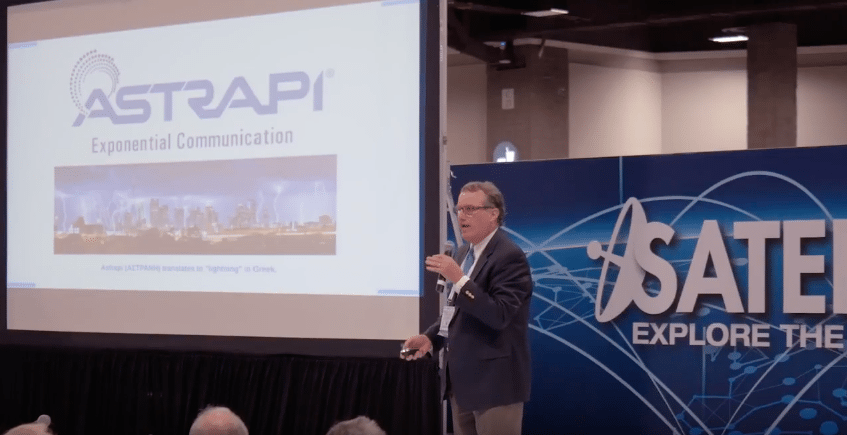Astrapi Secures Phase 2 SBIR Grant

Astrapi CEO Jerrold Prothero presents his pitch during the SATELLITE 2017 Conference & Exhibition. Photo: Astrapi.
Astrapi Corporation announced it has received National Science Foundation (NSF) Phase 2 Small Business Innovation Research (SBIR) grant related to Spiral Polynomial Division Multiplexing (SPDM). SPDM provides a structured way to increase the flexibility of symbol waveform design and to use this additional flexibility to address key problems in telecommunications.
According to Astrapi, in addition to robust synchronization, potential benefits of SPDM include dramatically increased spectral efficiency, improved interference rejection, lower latency, and reduction of the Peak to Average Power Ratio (PAPR). This second phase of the research will lead to a hardware implementation, Astrapi said.
A critical and limiting problem for any communication system is synchronization between the transmitter and receiver. According to Astrapi, Phase 1 project results for SPDM demonstrated promise for supporting very precise and low-overhead synchronization. Phase 1 also pointed towards significant SPDM power advantages.
“In Phase 2 we have extended our research partnerships,” said Jerrold Prothero, Astrapi Founder and Chief Executive Officer (CEO). “In addition to Dr. Fred Harris of the San Diego State University Research Foundation, the Southwest Research Institute (SwRI) has joined the team. Promising discussions concerning additional Phase 2-related partnerships are in progress. This research will eventually provide benefits for a wide variety of communication systems, including satellite, defense, mobile, and Internet of Things (IOT).”
Earlier this year, Astrapi won the grand prize of the Startup Space pitch competition at the SATELLITE 2017 Conference & Exhibition.